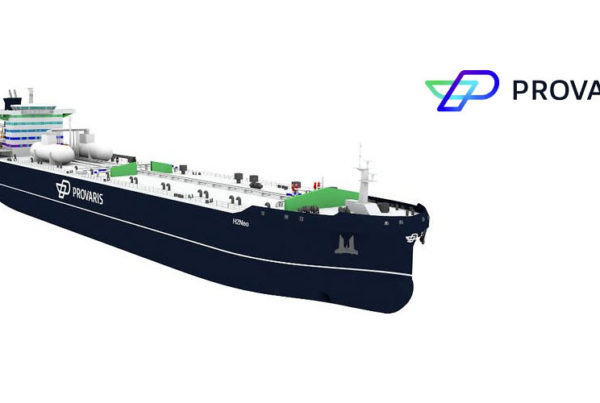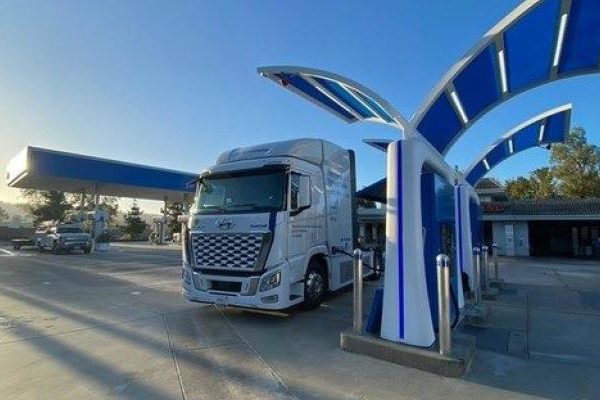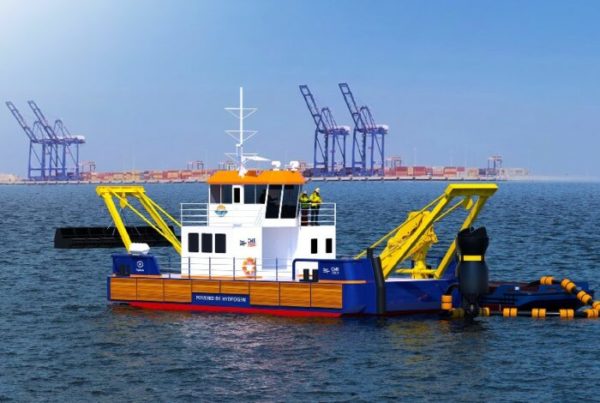
Liam Blackmore, Lead Specialist at Lloyd’s Register, is a busy man. He has led the technical policy writing of many of the class society’s decarbonisation rules. Horizons spoke to him in late April 2023, just a few weeks after LR had published the world’s first maritime rules covering hydrogen as a fuel.
They have been prepared as a 32-page ‘Appendix LR3’ to LR’s Rules and Regulations for the Classification of Ships using Gases or other Low-flashpoint Fuels, published as a Notice, and will be available in the Regs4ships digital compliance solution, powered by OneOcean, a member of LR Group, from July 3rd 2023. They took Blackmore six months to write and set out both general and specific requirements for ships using hydrogen as fuel.
They fill a gap within IMO’s International Code of Safety for Ship Using Gases or Other Low-flashpoint Fuels (IGF Code), which does not yet include guidelines for the safety of ships using hydrogen as fuel.
The appendix explains that it has been drafted to maintain consistency with the recently-published Appendix LR1, which addresses ships using methanol or ethanol, and Appendix LR2 on ammonia as fuel. Blackmore explained that the hydrogen appendix now enables designers to understand the performance they must achieve to ensure that a vessel will operate safely and reliably on hydrogen fuel, either in liquefied or gaseous form.
Explaining the practicalities
As an example of a hydrogen-specific requirement, he pointed to a section about bunker stations, which are based on those for LNG bunkering safety requirements. Only the additional hazards related to handling hydrogen are covered in the new appendix, which states that “the bunker station shall be located on the open deck with minimal congestion and with an unobstructed dispersion path for reasonably foreseeable leakage scenarios.”
Other requirements included in the new rules include identifying leakage scenarios as part of an explosion analysis and to “identify, detail and justify the environmental and arrangement factors” relevant to each scenario.
Lloyd’s Register already has several years’ experience of classing vessels fuelled by hydrogen. In 2017, it classed its first hydrogen-fuelled vessel, a non-SOLAS catamaran crew boat, Hydroville, owned by Belgium’s CMB. In the absence of prescriptive rules at the time, a risk-based approach to approval was utilised. The same operator was behind the first hydrogen-fuelled tug, the LR-classed Hydrotug, which went into service last year in Ostend.
Both those vessels burn their hydrogen in internal combustion engines but LR’s new rules are equally relevant for fuel-cell installations. Blackmore believes they helped LR win a hydrogen-fuelled project that uses this technology, involving two hydrogen-fuelled ferries due to enter service in 2025 on Norway’s longest ferry route, operated by Torghatten Nord. LR awarded them approval in principle (AiP) last year, also using a risk-based assessment.
LR’s new hydrogen rules reflect that risk-based approach, as their introductory notes explained. They “support the LR risk-based design process and flag administration acceptance of the ‘Alternative Design’ process, to permit the use of hydrogen as a fuel on board LR-classed ships other than gas carriers,” they said.
A family of rules
This latest set of rules complements LR guidance that has been issued during the past 18 months for methanol and ethanol (January 2022), ammonia (July 2022) and so-called ‘drop-in’ liquid biofuels (January 2023). Together, they provide a consistent approach, while addressing the specific hazards associated with each fuel. For example, although natural gas and bio-natural gas contain the same molecule, deriving that molecule through a biological feedstock has unique hazards, Blackmore said, which are addressed in the biofuel guidelines.
Methanol-fuelled ships are now well established, with the LR-classed Stena Germanica becoming the first methanol-fuelled ferry when it was converted in 2015 and, in January this year, the first non-tanker vessel to be bunkered with methanol via a ship-to-ship transfer.
For ammonia, Lloyd’s Register has been involved in a number of projects, most recently granting Approval in Principle in April for a medium-sized liquified gas carrier developed jointly by Mitsui E&S Shipbuilding, Mitsui OSK Lines and Tsuneishi Shipbuilding. It will be powered by an ammonia-burning main engine that is currently under development.
This group of guidelines is not the end of the story. For ammonia, methanol, hydrogen and fuel cells, LR has established working groups tasked with harmonisation and maintaining the policy associated design, manufacturing and construction standards, coupled with establishing survey policies and developing competence within LR’s staff to ensure that policies relevant to the various fuels are consistently applied throughout the ship’s life and LR’s global network, Blackmore said.
This is a long-term commitment. The rules will be iterated for decades to come, he indicated, “to make sure they remain relevant, up to date and reflect best practice within the industry.”
Download the original rules at Classification of Ships using Gases or other Low-flashpoint Fuels (lr.org)
SOURCE: Lloyd’s Register
Read the most up to date Fuel Cell and Hydrogen Industry news at FuelCellsWorks




